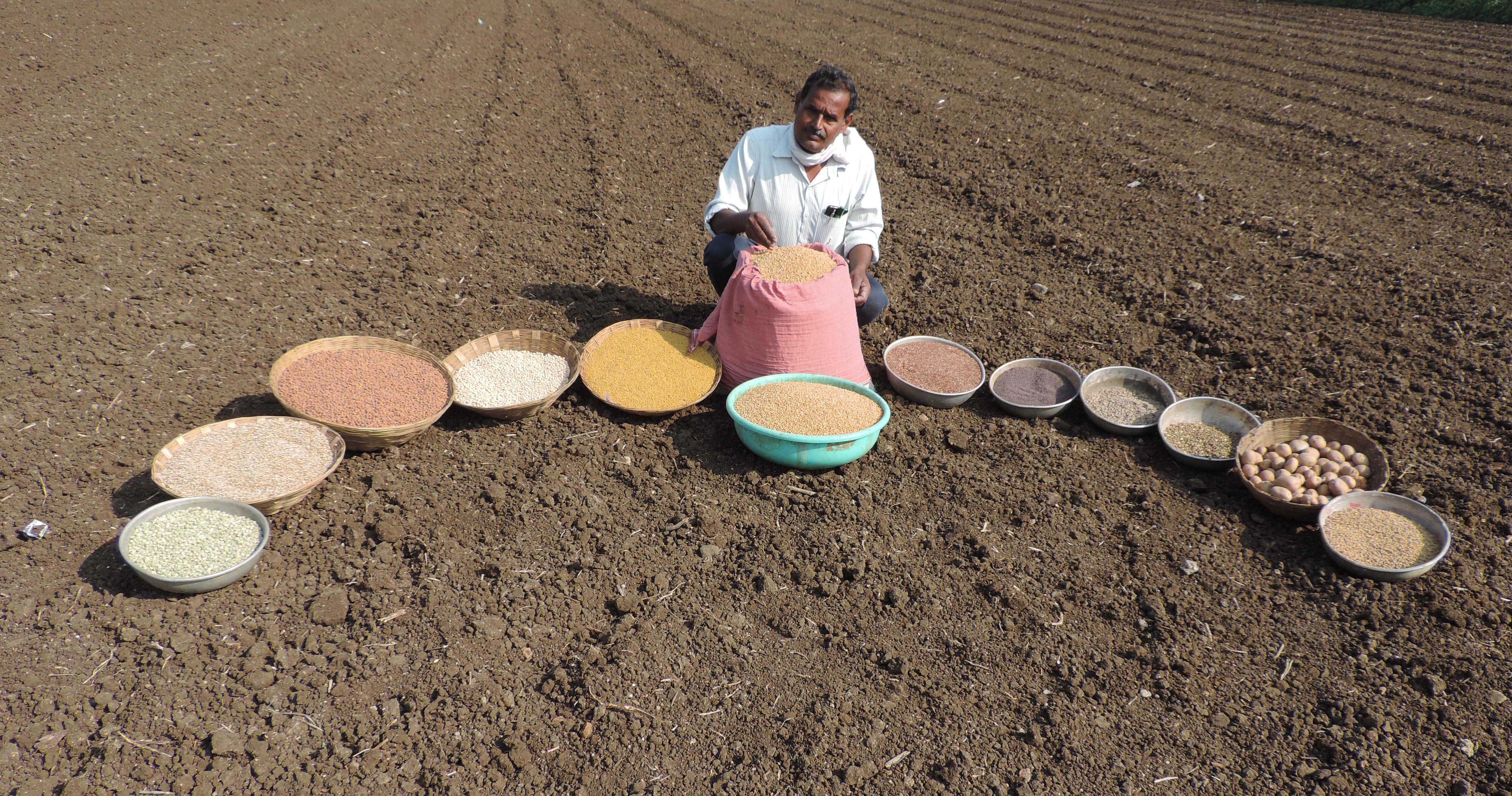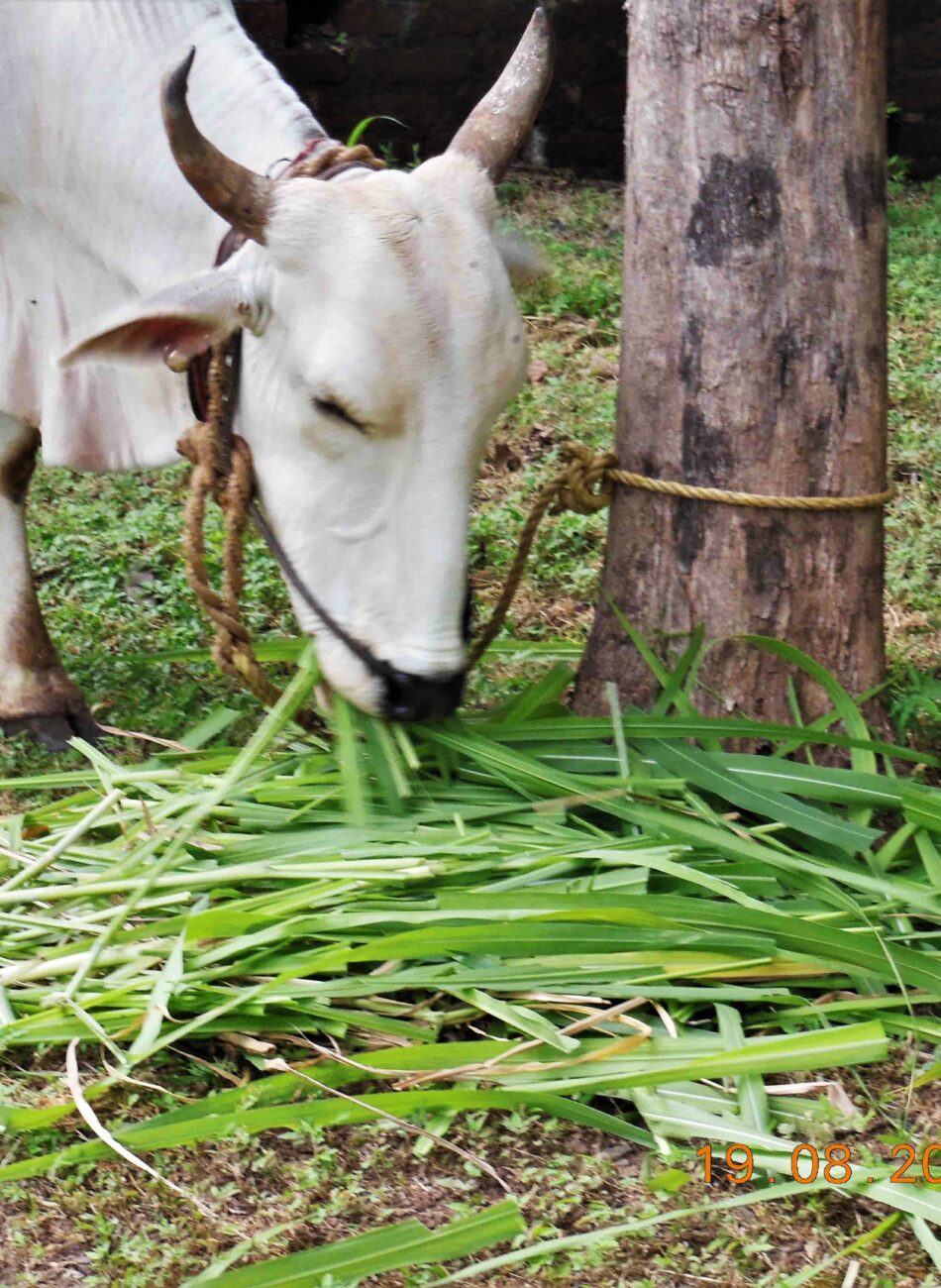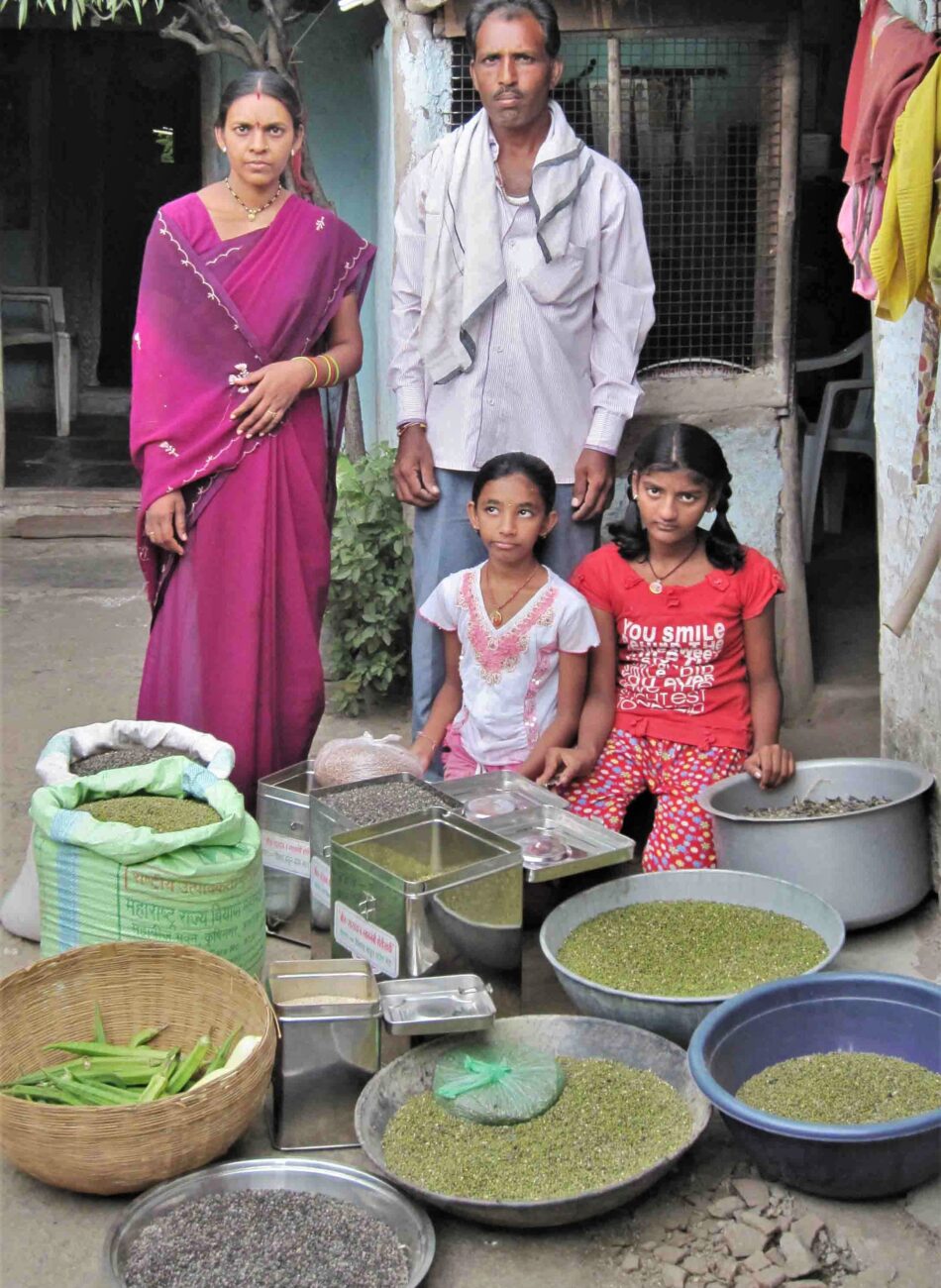The biggest paradox of agriculture is that farmers, who produce food for the entire country, are dependent on the market to feed themselves. Worse, they buy the least expensive food in low quantities.
Rural India largely suffers from hidden hunger and some pockets are rife with malnutrition with almost no access to food. Such a labour-intensive profession of agriculture, largely speaking, is ironical, one of the most malnourished sections of society.

SOWING MORE TO REAP MORE
Self-reliant farming ensures access to poison-free, safe food—first and foremost—for farmers and their families. The surplus goes to the market.
Access to food is combined with access to nutrition, when they plant about 35- 40 different food crops alongwith the main cash crop of cotton or soyabean. These crops can range from:
- Cereals – Sorghum, Pearlmillet, Amaranthus, Maize, Paddy
- Pulses – Pigeon Pea, Soyabean, Green Gram, Black Gram, Cow Pea, Groundnut, Chick Pea
- Vegetables – Tomato, Brinjal, Chilli, Bitter Gourd, Bottle Gourd, Ridge
- Gourd, Plain Gourd, Pumpkins, Cucumber, Dolichos, Cluster
- Beans, Ladies Finger, Green Onions, Elephant Foot Yam
- Spices – Turmeric, Mustard
- Fodder – Two species
- Others – Sannhemp, Rosella (two varieties), Sesame, Moringa
- Dryland fruits – Zizyphus (Ber), Guava, Custard Apple, Indian Gooseberry

Similarly, in Rabi conditions, the access to food and nutrition security has been increased by developing new technology for wheat cultivation. Along with wheat, at least 8 to 11 crops are grown in the same field, which is beneficial to the wheat crop leading to better productivity and profitability. And the farmer gets more nutrition diversity to consume.
FOOD FOR THOUGHT, FOOD FOR ALL
- Increasing productivity, profitability & stability by 20% in 3-5 years.
- Special attention to address challenges because of the Climate Change Crisis.
- Addition of 100 new demo farmers from representative villages across 1,000 villages of Wardha District.
- Special attention to women farmers.
- Processing & marketing of products for premiums, and promotion of organization of the producer group of farmers.
- Reaching out to new areas of 5 States of India, policy-making bodies, academia and networks; attending visitors coming for studies.
- Documentation of sample of farmers.
- Training course for practitioners.
- Continuation of the pilot experiment on Resource Centre of Chetana-Vikas and its thorough documentation.
- Publications, papers, articles.
- Collaborated and facilitated as Consultant Resource Agency for the production and telecasting of a 26 episode serial on Self-Reliant Agro-biodiverse Alternative way of farming. Click Here for more info.
Chetana-Vikas strives to combine relevant traditional knowledge with proven sustainable scientific methods and inputs. Farmers build on the knowledge of the farming system, with the implements that they own, and with the resources that they have. The only inputs are the seeds for food crops that they had lost. Apart from that, they need to be trained in crop management so that every inch of the soil is used by the small landholders. This system can be modified to suit big landholders and those practising tractor cultivation as well.
The farmer’s family gets a wide variety of the food basket, almost meeting 80 per cent of their nutritional needs from dryland (about 1 hectare), along with 80 per cent of their annual cash needs. This system acts as insurance against climate fluctuation, market fluctuation and any severe pest or disease attack. Since only a few crops might be affected, the rest of the crops harvested by way of food, fodder, cash or even fertility ensures that the farmer’s family is secure on multiple fronts.
Improved health of the family is an indicator of consumption of increased quantity and quality of food. The savings go into improving their quality of life like education, clothes, or fulfilling other basic necessities.







